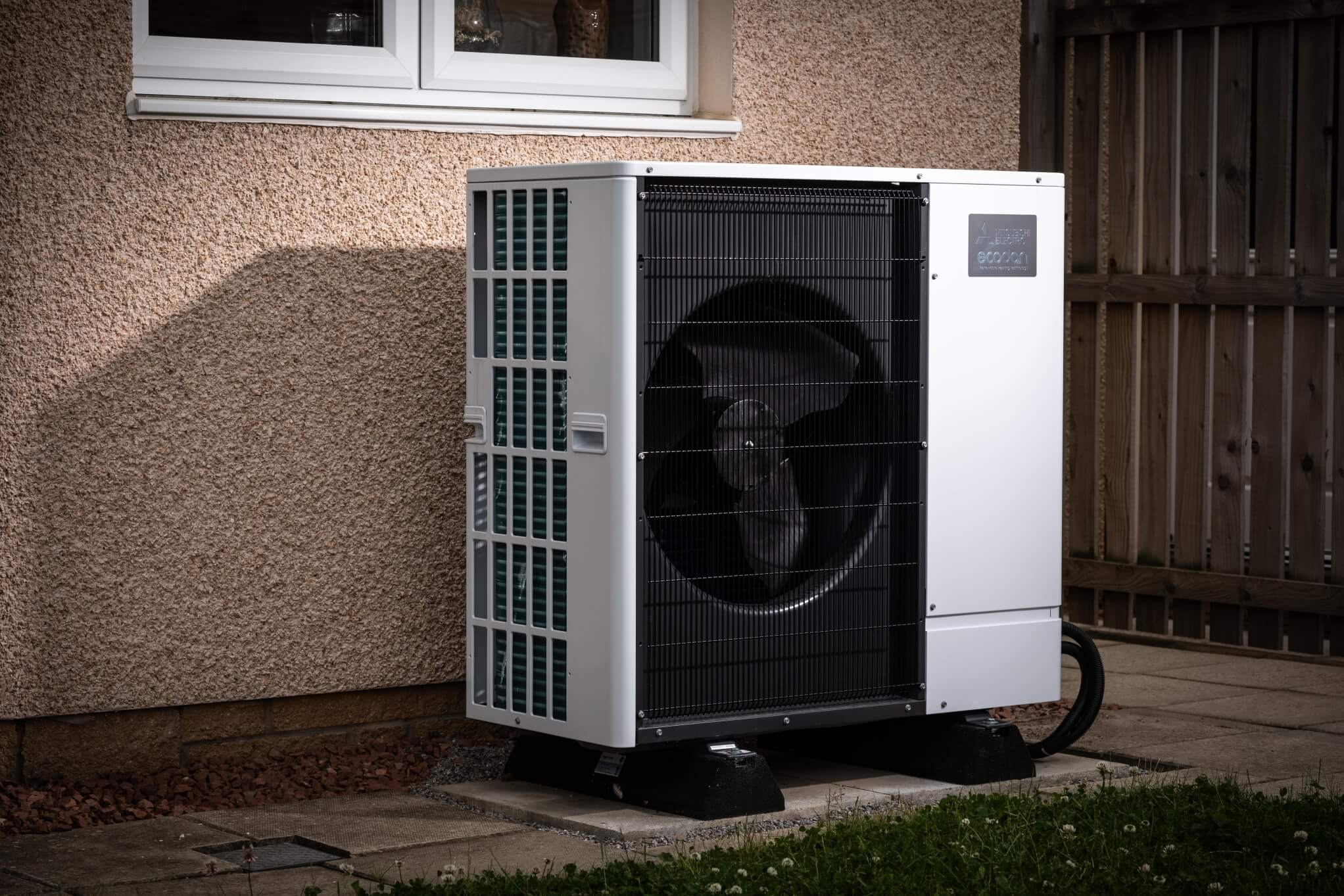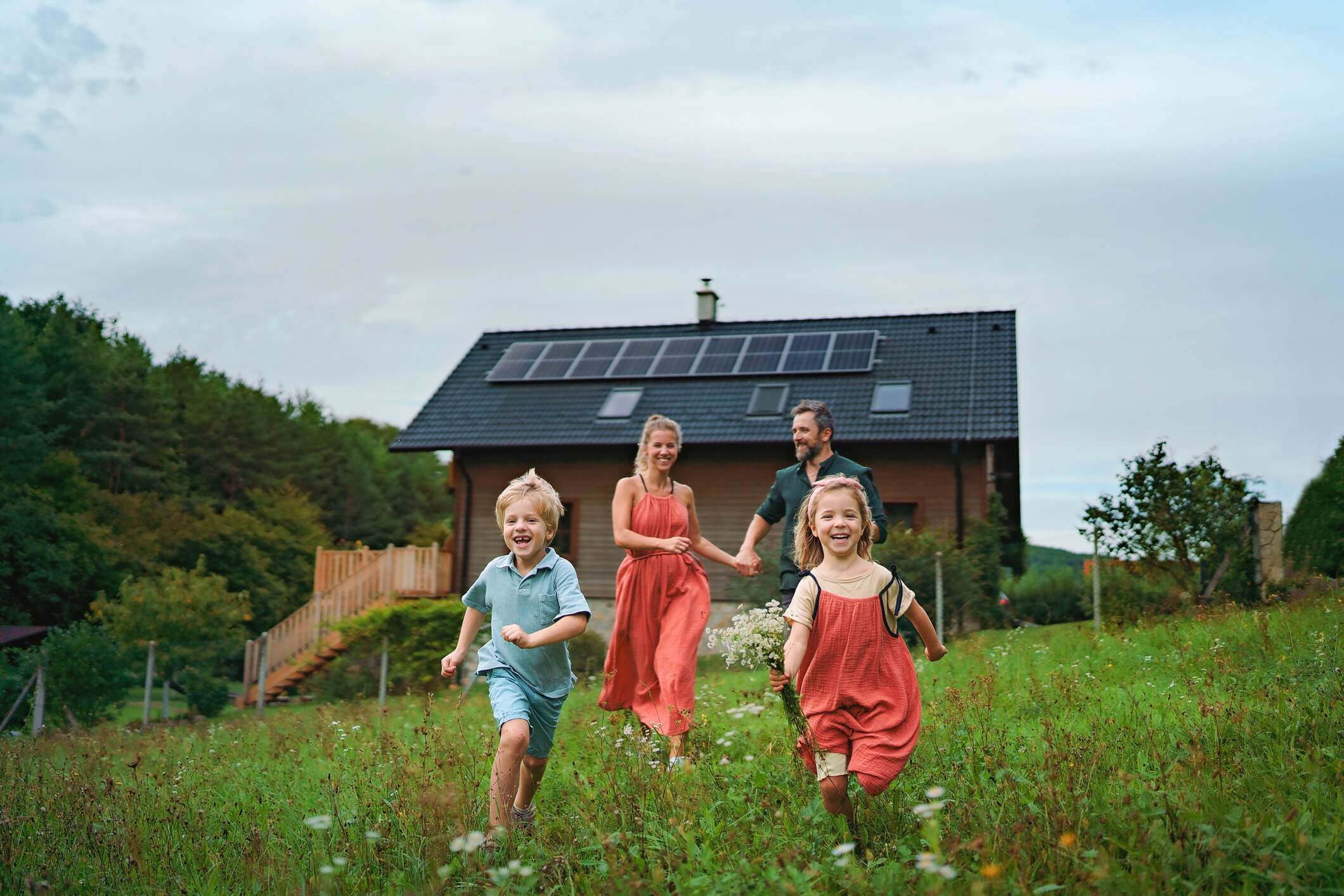11 heat pump myths
11 heat pump myths
Heat pumps will be an essential part of Scotland's drive to have one million low-carbon homes by 2030. In this article, we explore some misconceptions and common myths about heat pumps.

Scotland’s cool weather means over half of the typical Scottish energy bill goes on heating and hot water. Adopting air source and ground source heat pumps will be part of the Scottish Government's drive to a net-zero emission economy by 2045.
Read on to learn more about this low-carbon heating system that may revolutionise Scotland's relationship with heating and renewable energy consumption.
11 heat pump myths
Explore some misconceptions and common myths about heat pumps.
A heat pump system can be designed for many types of homes, even those without much space. Each heat pump will have its own space requirements:
- An air source heat pump will require about 2 to 4 sqm somewhere close to your home. This includes the outdoor unit itself and some clearance around the unit for access. It must be unobstructed, leaving enough space for good airflow. Inside, you'll need somewhere for a hot water cylinder.
- A ground source heat pump will need a garden or land accessible to digging machinery to lay underground pipes. Once installed, the trenches or boreholes are filled, and the garden is returned to previous use. Inside, you'll need space for the indoor unit and hot water cylinder.
- Air-to-air heat pumps require outside space for installation on the ground or fitted to a wall.
- Air source split system, ground source, and water source heat pumps all need room for a compressor and controls. They also require an internal unit that is often smaller than a standard boiler.
Underfloor heating isn't essential, but installing it can help improve the efficiency of your heat pump.
A heat pump operates most efficiently when delivering water at a lower temperature water than a traditional boiler. A large radiator can be run at a lower temperature and still provide as much heat into the room as a small radiator.
The bigger the radiator's surface area, the lower the water temperature needed to provide the same amount of heat into the room.
If you have underfloor heating—or you can fit it—then the whole floor emits heat into the room. You can run the heat pump at an even lower temperature because underfloor heating offers a more extensive surface area than even large radiators.
However, neither underfloor heating nor oversized radiators are essential. A heat pump system can be designed to work with smaller radiators. Speak to your installer about your options if upgrading your radiators isn’t practical.
Your hot water needs must be considered when designing the heat pump system.
Many heat pumps can consistently provide hot water over 60°C (the minimum temperature your hot water cylinder will need to reach to kill harmful bacteria). However, it's often more cost-effective to run the heat pump at this temperature periodically, called a sterilisation cycle. An electric immersion heater (or even solar hot water heating) in your hot water cylinder can top up the water temperature when you need it.
Talk with your installer about your hot water needs. High-volume hot water users may need a different design than low-volume hot water users. The installer can set these controls for you.
Early heat pumps were a little noisy, and the tag has, unjustly, stuck. Heat pump technology advances mean modern, energy-efficient heat pumps are much quieter.
The noise comes from the heat pump's fan pulling air into the system. While heat pumps operate quietly, consider locating the unit away from a bedroom window, particularly if you live in a tranquil area.
Ground source heat pumps tend to be slightly more efficient in colder climates, as the relatively stable temperatures of the ground mean there’s more heat available for the heat pump to extract. However, they require more extensive installation work, including burying pipes underground, which can drive up the initial cost.
If you live near and have access to water close by, like a loch or river, a water source heat pump could also be an alternative and have high efficiencies.
In very cold air temperatures, air source heat pumps will lose efficiency, as there's less heat in the air available to use. However, Scotland has mild winters compared to other countries with more air source heat pumps installed.
A few areas of Scotland do experience very cold temperatures. If that’s you, there should still be an air source heat pump that will work for you. Still, it's worth speaking with your installer for advice about the performance of your potential system or checking if any neighbours might have one already in the Green Homes Network.
Improving insulation and draught-proofing your home is the first step to a cosy home, no matter your heating system.
Check out Energy Saving Trust's insulation guideHeat pumps do have significant upfront costs.
As a guide, the typical air source heat pump costs around £14,000 to install. Your quote will depend on the size of the heat pump and any work required in the home, such as new pipework, radiators, or a hot water cylinder.
For a ground source heat pump, you could expect to pay around £28,000 if your ground loop is buried in trenches or around £49,000 if you need to dig a borehole.
However, financial support is available.
For example, the Home Energy Scotland Grant and Loan offers Scottish homeowners support to help with heat pump installation costs.
A heat pump uses electricity, so you will continue to receive energy bills. But you may save on the fuel you are replacing, especially if you are replacing an electric heating system.
Find out more about the Home Energy Scotland Grant and LoanA heat pump doesn’t need to be on all the time, but the best way to heat your home with a heat pump is different from traditional systems.
Gas or oil boilers are usually designed to heat water to 60C or hotter. For some homes, especially smaller, well-insulated ones, this could mean your home heats up from cold in less than 30 minutes.
Controlling a heat pump in the same way means the heat pump has to produce really hot water. Outputting high-temperature water reduces the efficiency of your heat pump. Heat pumps are often controlled to stay on longer to achieve the lowest running costs, heating the house slowly but keeping it at a consistent, comfortable temperature.
If you go out for a few hours, it won’t be worth turning the heating off as this would mean the heat pump has to operate at a high temperature to heat the home when you return.
The heating can all be automatically controlled by your thermostats or zone controls — you don’t need to worry about changing your heat pump settings.
There are many examples of heat pumps running successfully and cost-effectively in older properties.
An installer will design your system based on your heating needs and property type. There are many heat pump models, so they’ll select one that best matches your needs. A good installer will also discuss options to increase insulation and draught-proofing, as well as potentially upgrading radiators to get the most out of your new system.
Sometimes, it might be challenging to install a heat pump in a property for practical or financial reasons. In that case, installers may suggest alternative options.
Always check with your local planning authority if you require planning permission, especially if you live in a conservation area or listed building.
Heat pumps are energy efficient. They can produce two-and-a-half to four times more heat energy than the electricity needed to run them.
In 2021, Scotland generated over 27,000 Gigawatt hours (GWh) of renewable electricity, the equivalent of 85% of its consumption. Heating your home and hot water with a heat pump is an environmentally friendly choice. Heat pumps efficiently move heat from the surrounding air or ground into your home, requiring much less energy than traditional heating systems, like burning gas or oil. Heat pumps use electricity to operate, but as our grid shifts to cleaner energy sources like renewables, heat pumps become increasingly low carbon over time.
Once installed, your heat pump requires very little maintenance. They are safer than gas, oil, or LPG systems because they don't use flammable fuels, and there is no risk of carbon monoxide accumulation.
You should always follow your heat pump installer’s advice and recommendations about system maintenance. An air source heat pump needs an occasional pressure gauge check plus an annual check to ensure the heat pump is debris-free. The recommended practice is to have a heat pump professionally serviced every two to three years.
Ground source heat pumps need a yearly inspection of fixtures and fittings and the electronics board, with a professional service every four to five years.
Many heat pump installations won’t require planning permission. However, always check with your local authority if you need planning permission.
People living in conservation areas, national parks, and listed buildings have more restrictions.
Water and ground-source open loop systems require a water abstraction license, separate from planning permission. In Scotland, abstraction permission comes from the Scottish Environment Protection Agency (SEPA).
Heat pumps: from myth to reality
All the chatter around heat pumps is not just hot air; the next decade will see mass adoption of heat pump technology. The Scottish and UK governments are firmly behind the move to low-carbon heating:
- By the end of 2023, Scotland had 24,281 heat pumps installed in homes.
- By 2030, the Scottish government wants 40% of the country's 2.5m houses—a million homes—to have low-carbon heating.
- The UK government has committed to installing 600,000 heat pumps every year from 2028.
Financial support
Explore financial supportNow is the time to take advantage of financial support and payment initiatives and start enjoying low-carbon heating in your home.
Latest news and case studies
We have articles, blogs and case studies covering topics ranging from home energy tips to low carbon travel, and business advice to installing renewables.

Where to turn for financial support during difficult times

Support for People in Rural Homes



